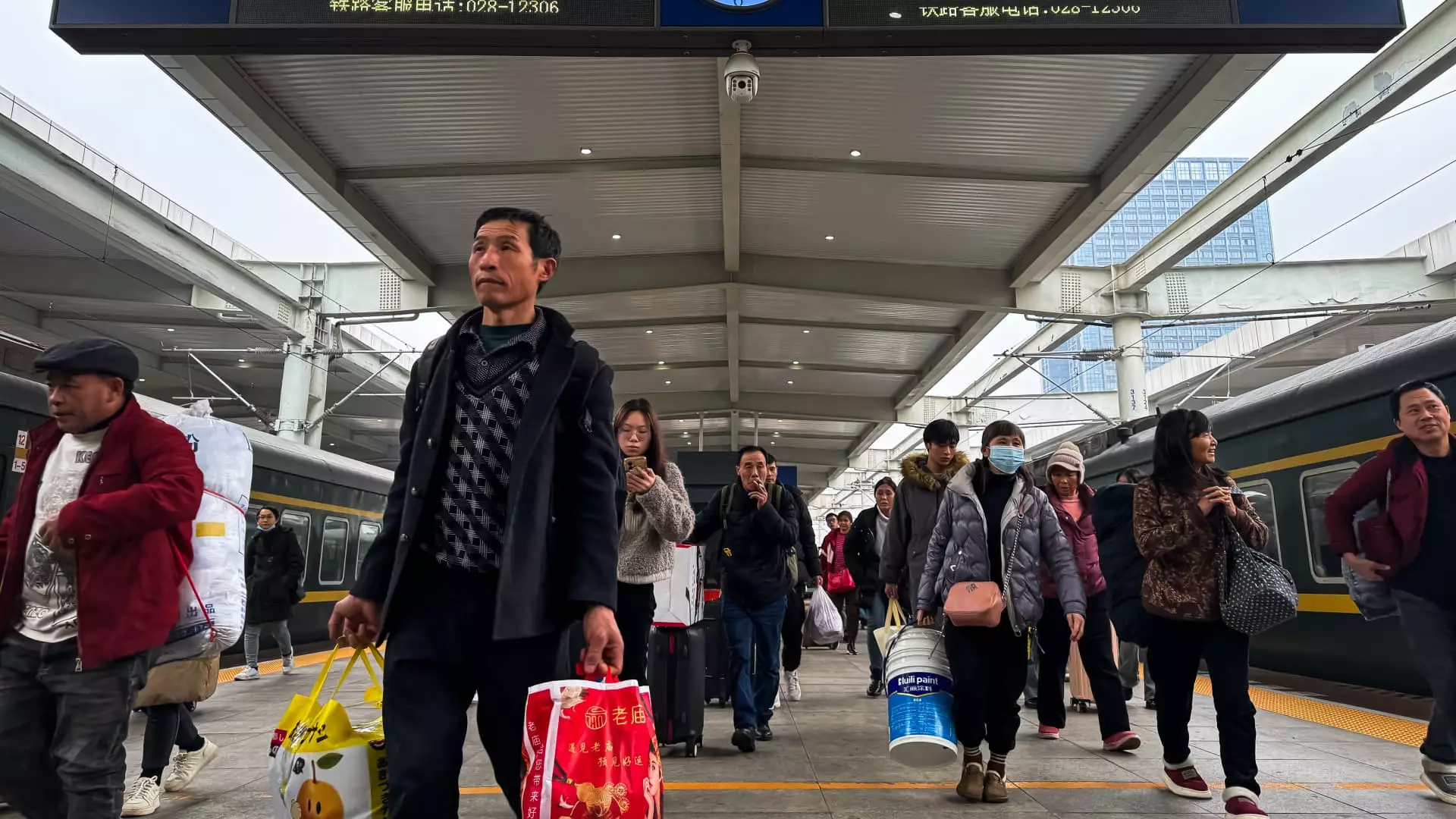The Chinese economic landscape has been marked by uncertainty and a lack of robust recovery despite government assurances. As of late 2023, policymakers have engaged in several measures to stimulate growth, such as interest rate cuts and expansive stimulus plans. However, the details regarding fiscal support remain sparse, with an anticipated comprehensive outline expected during the annual parliamentary meeting in March. This has left investors anxious, searching for concrete signs that the economic tide is turning.
According to BlackRock Investment Institute, the current fiscal measures, though a step in the right direction, are insufficient to mitigate the persistent downturn affecting China’s economic growth. There remains an overarching concern regarding the country’s structural challenges, indicating that any short-term relief might not translate into a sustainable recovery. This caution is underscored by official GDP figures set to be released soon, which are expected to provide a clearer picture of economic health moving forward.
Domestic demand has plummeted, and concerns surrounding deflation are becoming increasingly pronounced. The data indicates that consumer prices are barely rising, with an increase of only 0.5% when excluding food and energy volatility, marking the slowest growth rate in a decade. Such stagnation in consumer spending raises profound questions about the overall economic vitality of the country. With foreign investments also on the decline, officials like Yin Yong, the mayor of Beijing, express concerns regarding the outlook for various industries.
The capital’s government has set a target of 2% inflation for 2025, aiming to revitalize technological advancements and consumption. Yet, without immediate impactful adjustments to fiscal policies, achieving these goals may be challenging. Economic initiatives announced thus far reflect a desire to spur growth; however, the actual issuance and impact of long-term bonds designed to boost consumption may take significant time to materialize.
The struggles facing China’s commercial real estate sector are profound. Market analysts, including Mi Yang from JLL, project ongoing difficulties, with rental rates for high-end office spaces declining significantly. These downward trends can be linked to increasing vacancies and the emergence of newly developed shopping centers, which, despite a modest recovery in occupancy rates, still face underlying economic challenges.
Moreover, the trajectory for the real estate market has been adversely affected since the government began cracking down on high developer debt levels in 2020. This policy change has had ripple effects throughout the economy, leading analysts to predict that the market has not yet hit its nadir. With Beijing’s recent endeavors to stabilize the real estate sector, observers remain skeptical about whether these measures will effectively bolster demand in an industry that historically has been a cornerstone of China’s economic growth.
Contrary to strategies employed in other countries—like cash handouts during the COVID-19 pandemic—China has taken a different approach. The government has allocated substantial funds towards trade-in subsidies aimed at rejuvenating consumer interest in purchasing white goods and electronics. While this initiative appears promising and may elevate transaction volumes in the short term, there are concerns regarding its sustainability and long-term effectiveness.
Economists, such as Ting Lu from Nomura, warn that the anticipated sales boost might wane as the year progresses. A significant concern remains the stagnation in new housing sales, which traditionally has a cascading effect on the consumption of household goods and services. The real estate sector’s contribution to the economy—once accounting for over 25%—has faced a notable decline since regulatory measures were enacted.
Geopolitical Tensions and Their Economic Ramifications
Inextricably linked to these domestic challenges are the geopolitical tensions that China faces, particularly with the United States. Beijing’s push for greater domestic control in strategic sectors has raised alarm among foreign businesses, who find themselves adapting to a more localized and restrictive environment. As reported by the EU Chamber of Commerce, the necessity for European companies to align with local mandates has created friction, impacting business efficiency and profitability.
Despite these hurdles, China’s focus on security alongside developmental goals suggests a nuanced strategy that aims to navigate both domestic and international pressures. As highlighted by Yang Ping of the National Development and Reform Commission, boosting consumption is prioritized, indicating a shift in policy focus that will evolve based on insights gathered from upcoming parliamentary discussions.
China’s economic future is one marked by complexity and ambiguity. While there are indications that government initiatives may yield positive results over time, a range of structural issues, combined with a challenging global landscape, present significant hurdles. As key data is released and policymakers unveil their fiscal strategies, stakeholders will closely monitor these developments, hoping for a pathway towards sustainable growth in the tumultuous environment that defines the current Chinese economy. The journey will be austere, and the forthcoming Parliamentary meeting will play a crucial role in setting the tone for economic strategies in the year ahead.

